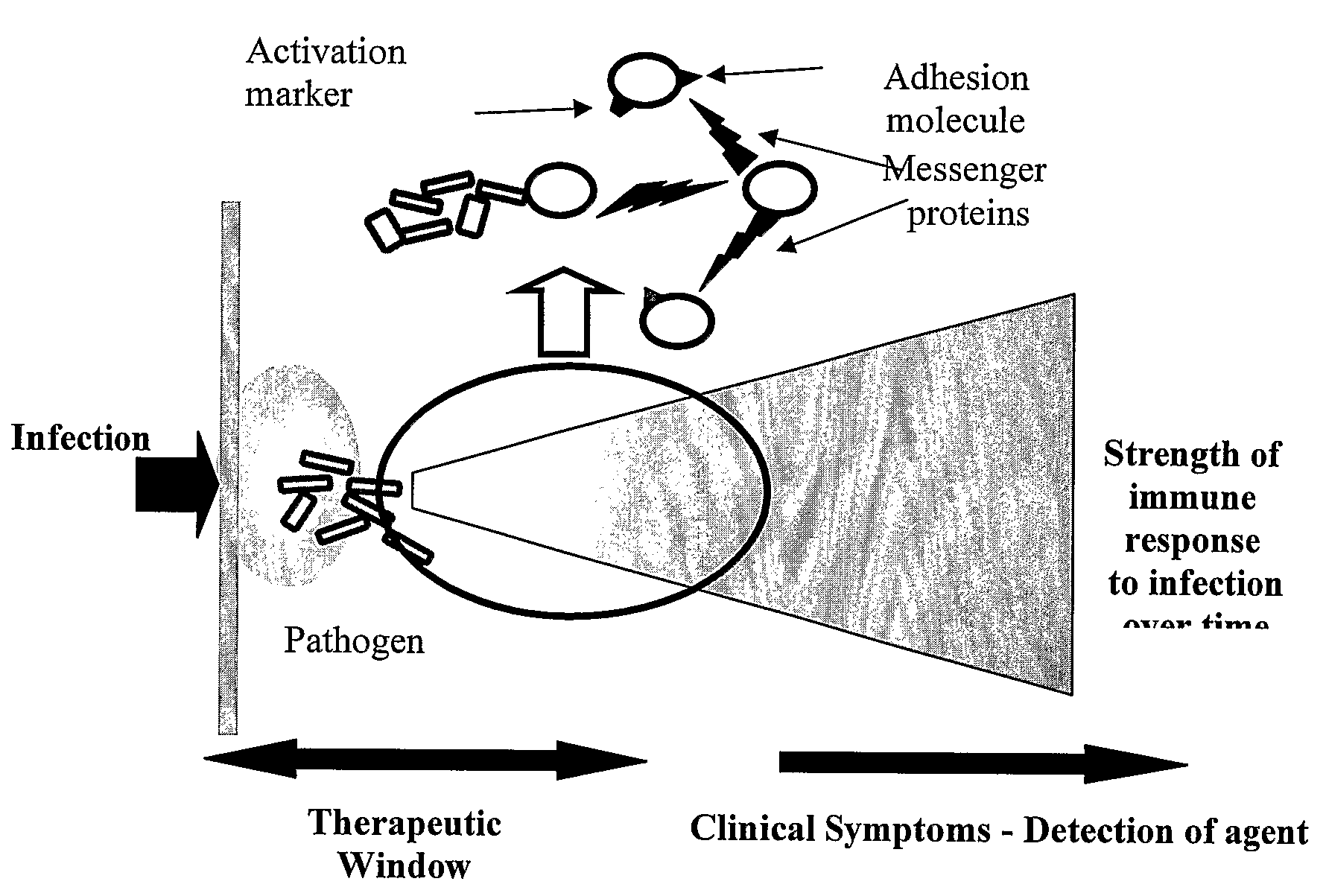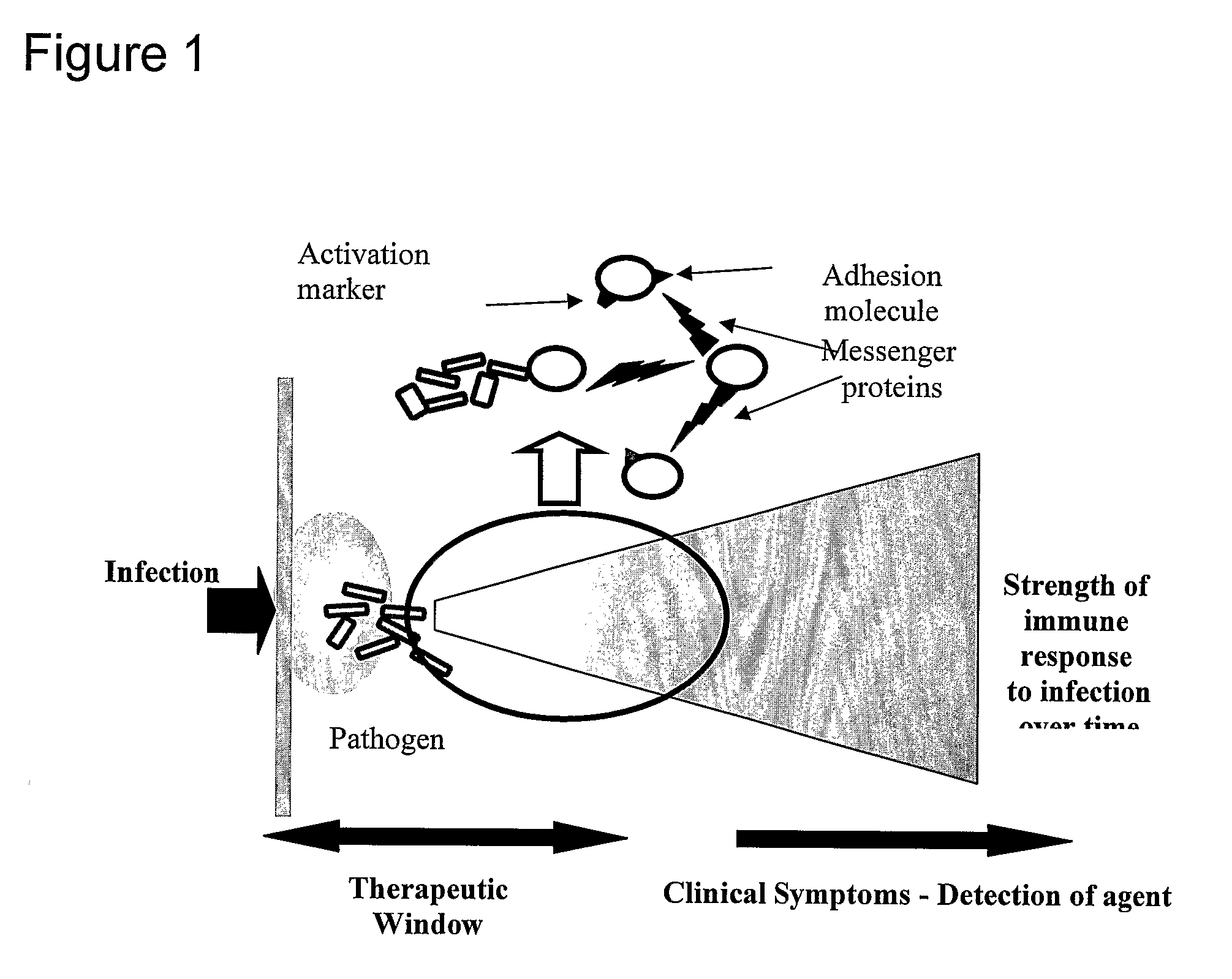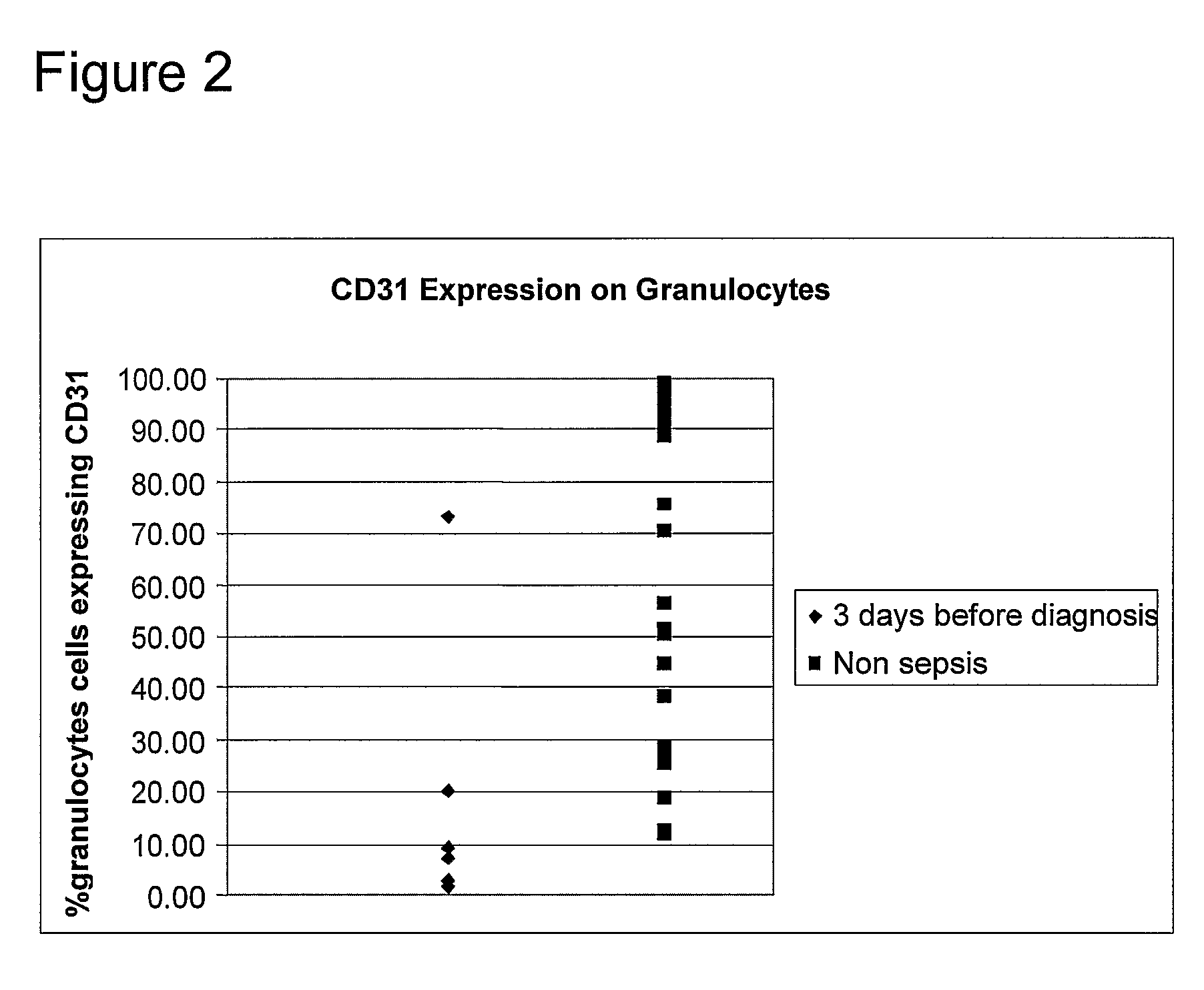Early Detection of Sepsis
- Summary
- Abstract
- Description
- Claims
- Application Information
AI Technical Summary
Benefits of technology
Problems solved by technology
Method used
Image
Examples
example 1
Prediction of Sepsis by Neural Network Analysis of Cytokine Expression, Cell Surface Markers and Clinical Measures
Study Design and Patients
[0063]The study into the onset of sepsis from the ICU department of Queen Alexandra hospital resulted in a cohort of ninety-one patients (Dstl / CR08631). Blood samples were collected daily from these patients throughout their stay in the ICU and in total, twenty-four patients were diagnosed as developing sepsis. Samples taken on the day clinical sepsis was diagnosed (Day 0), back through to six days prior to sepsis diagnosis (Day −6) were analysed by RT-PCR and flow cytometry for the expression of activation markers and cytokine mRNA respectively. In addition, standard hospital data and clinical observations were recorded. Samples from control patients were also processed in the same manner to provide data for traditional statistical analysis.
[0064]RT-PCR was performed according to commonly-used laboratory techniques. Briefly, in the case of a blo...
example 2
Lack of False Positive Results from Non-Sepsis Volunteers Using Neural Network Model
[0076]Table 6 shows the results of testing a group of volunteers by cytokine RT-PCR, none of whom developed signs of SIRS or sepsis.
TABLE 6Im-Hits / Hits / prove-NameOccurred%Predicted%ChancementRatioTotal13 / 13100.0N / AN / A50.0%50.0%2.0:1Control13 / 13100.013 / 13100.0100.0%0.0%1.0:1Sepsis0 / 0N / A0 / 00.00.0%0.0%N / A
example 3
Neural Network Sepsis Prediction of More than 90% Accuracy Using Clinical Data
[0077]Neural network model tested using clinical data set defined in Table 4 model 2, using the parameters as described in Table 7 below and further illustrated in FIG. 3:
TABLE 7Neural network parameters to analyse clinical dataInputUnit 1Unit 2Unit 3Unit 4Unit 5Weights from input to hidden1−3.043890.783085−8.14579−5.31918−11.6992−2.40492−3.283416.81119−2.2288910.3357320.0835039−2.2513615.2575−3.3867711.48424−16.29183.45666−5.862588.93773−1.57967512.782845.26186.367917.4505317.1156634.32017.31471−18.39216.80610.20577−3.31337−1.41443−10.2639−3.683241.4483Weights from bias to hidden1−0.407035−9.388794.06257−12.6877−10.7582Weights from hidden to output1−8.794838.8202628.79794−8.3806433.60783−3.6217743.00073−3.8377854.85609−4.85559Weights from bias to output1−2.640152.65373
TABLE 8NameHits / Occurred%Hits / Predicted%ChanceImprovementRatioCondition14 / 1593.3N / AN / A50.0%43.3%1.9:1Sepsis8 / 8100.08 / 988.953.3%35.6%1.7:1Co...
PUM
| Property | Measurement | Unit |
|---|---|---|
| Fraction | aaaaa | aaaaa |
| Fraction | aaaaa | aaaaa |
| Fraction | aaaaa | aaaaa |
Abstract
Description
Claims
Application Information
 Login to View More
Login to View More - R&D
- Intellectual Property
- Life Sciences
- Materials
- Tech Scout
- Unparalleled Data Quality
- Higher Quality Content
- 60% Fewer Hallucinations
Browse by: Latest US Patents, China's latest patents, Technical Efficacy Thesaurus, Application Domain, Technology Topic, Popular Technical Reports.
© 2025 PatSnap. All rights reserved.Legal|Privacy policy|Modern Slavery Act Transparency Statement|Sitemap|About US| Contact US: help@patsnap.com



